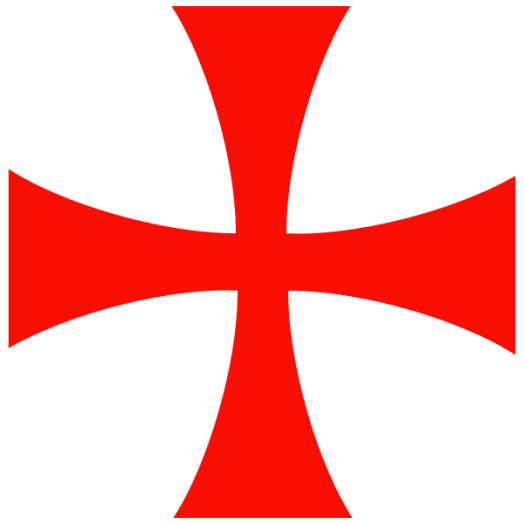
The Knights Templar are remembered by official history as one of the most important military orders of the Crusades of the Middle Ages. Not only were they formidable fighters, protecting Christan pilgrims on their way to Jerusalem.
Over 700 years have passed since that date, yet the name of the Knights Templar continues to resonate with a tone of mystery even today. Could this be because behind their armour and their emblematic Red Cross lies a secret that is just as relevant today as it was in the Middle Ages? What if their true treasure was not material wealth, but a hidden inheritance of wisdom – an ancient knowledge known as Gnosis?
This blog explores that possibility by following the hidden threads of esoteric traditions that suggests the Templars were not just fearsome warriors and shrewd financiers, but were guardians of the ancient mysteries of Gnosis.
Gnosis: inner knowledge
The word Gnosis comes from the Greek gnōsis (γνῶσις), meaning “knowledge.” It refers not to an accumulation of intellectual information, but to an inner experience, which is a direct and transformative encounter with truth.
Gnosis is knowledge through experience and transcends dogma and belief. It offers freedom from ignorance and awakens the consciousness of the seeker. It connects the searcher on the Path to their divine spark within – their Essence. The true knowledge taught by the Gnostics is not found in temples or churches, or in distant heavens, but in the innermost essence of the human being.
Throughout history, Gnosis has flowed like an underground river. Though empires fell and orthodoxies rose, its current reappeared in different times and places, carried forward by esoteric communities, custodians of the mysteries who passed it on to the next guardians. In this case the Templars.
To comprehend how this knowledge might have reached the Templars, it is crucial to trace the path of its custodians through the centuries
A Hidden Lineage: From the Essenes to the Templars
The guardianship of this wisdom was not public but secret, handed down through veiled traditions from one esoteric school to the next. Its journey to the Templars can be traced back to the Essenes, a mystical Jewish brotherhood who withdrew into the desert in search of inner purity. Their writings, known today as the Dead Sea Scrolls, reflect themes of light and darkness, and the existence of secret teachings for initiates.
Then the Neoplatonists elaborated on the soul’s ascent toward the divine. Later, communities of “Desert Fathers” emerged, sought enlightenment through direct experience.
Further on in history, the Kabbalists and Sufis explored creation and the union with the divine through symbols, allegories, and inner practice – echoing the same Gnostic ideas.
Centuries later, the Cathars of Languedoc were condemned as heretics and they envisioned a Cosmos divided between a God of Light and a demiurgic power of Darkness. For them, salvation lay in “perfect knowledge” and the purification of the soul. A teaching that unmistakably mirrors Gnostic philosophy.
This lineage prepared the ground for the emergence of the Templars as the Next custodians of the occult knowledge.
The Templars in the Holy Land
When the Templars established themselves on the site believed to be Solomon’s Temple, they occupied not only a fortress but a symbolic gateway. Jerusalem – the meeting point of traditions both Abrahamic and esoteric – was a crucible of hidden wisdom.
Here, according to legend, the Templars unearthed manuscripts, symbols, and teachings. Contact with groups such as the Ishmaelites and the Druze may have further enriched their understanding. Upon returning to Europe, their strongholds in Cathar territory suggest a continuity of teachings between these traditions.
The astonishing transformation of the Templars from a small fraternity of knights to one of the most powerful orders of Christendom may have been due not only to worldly alliances, but to a secret knowledge that gave them both insight and influence.
Symbols and Archetypes of the Order of the Temple
The legacy of the Templars is inscribed not only in chronicles but in their symbols and rituals. These enigmatic fragments point toward a deeper understanding and a connection to Gnosis. For example:
The Cross Pattée: The Symbol of Duality
With its arms expanding outward, it has been interpreted as more than a Christian emblem. Esoterically, it represents the four elements in balance, Air, Fire, Water and Earth, which meet in the centre of the cross. The central point signifies the Awakening of Consciousness where matter and spirit converge.
Baphomet: The Occult Archetype
During the Inquisition, the Templars were accused of venerating a mysterious figure known as Baphomet. Far from the caricature of demonic worship, this is a Gnostic symbol that represents the demiurge, A hidden archetype of wisdom and an acknowledgment of the forces governing the material world, which the initiate must understand in order to transcend.
These symbols suggest that, beneath their public identity, the Templars carried within their Order a doctrine of inner transformation.
The Hidden Legacy of the Templars
The dissolution of the Order was swift and violent, yet their wisdom did not vanish. Scattered across Europe, surviving Templars transmitted their knowledge to other mystical movements, ensuring continuity within the hidden links of the chain of Gnosis.
Therefore, beyond their military and political role, the Knights Templar can be understood as custodians of an ancient current that connected the Essenes, the Neoplatonists, the Cathars, and later esoteric traditions. They were the link that prevented Gnostic knowledge from disappearing.
If this blog resonates with you, please share it with other seekers, subscribe to our blog, and join us as we continue tracing the hidden threads of forgotten wisdom.
Subscribe to our blog!

